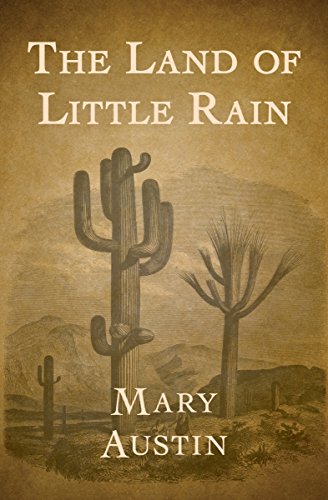
Local Reading: The Land of Little Rain

The Land of Little Rain is a collection of essays written by Mary Austin, first published in 1903, that paints a vivid and poetic picture of the American Southwest, specifically focusing on the Owens Valley and surrounding desert landscapes. Austin’s writing conveys the harsh beauty, unique ecosystems, and the deep connection between the land and its inhabitants—both human and non-human.
Significance to the Owens Valley:
- Environmental and Cultural Representation: Mary Austin’s work captures the Owens Valley and its surrounding deserts with a deep sense of place and an almost spiritual connection to the land. The essays discuss the flora, fauna, and indigenous people, particularly the Paiute, emphasizing how all forms of life have adapted to the extreme desert environment. Her portrayal is significant because it preserves a record of the landscape and culture of Owens Valley at a time when both were undergoing rapid changes due to human intervention.
- Connection to Water Rights and Los Angeles: The Owens Valley is historically significant for its role in the water wars between the valley and Los Angeles in the early 20th century. While The Land of Little Rain predates the construction of the Los Angeles Aqueduct, which diverted water from the Owens River to Los Angeles in 1913, Austin’s work highlights the region’s aridity and the preciousness of its water resources. Her descriptions of the land underscore the fragility of the Owens Valley ecosystem, making her writing feel prophetic in light of the water crisis that unfolded later.
- A Celebration of Natural Beauty: Mary Austin was one of the earliest American writers to celebrate the desert as a place of unique beauty, rather than seeing it as a barren wasteland. Her essays convey the subtle allure of the Owens Valley and the surrounding desert, with its stark landscapes, dramatic skies, and resilient life forms. This perspective has been influential in environmental literature and in shaping public appreciation for desert landscapes.
- Advocacy for Indigenous Communities: Austin’s essays also highlight the deep connection between indigenous communities and the land. She had a particular affinity for the Paiute people of Owens Valley, portraying their knowledge of the desert’s resources and their harmonious way of life. She recognized the looming threat posed by settlers and the growing influence of external forces, such as water diversion, on their traditional ways.
Overall, The Land of Little Rain is a vital part of the cultural and environmental history of the Owens Valley, both as a literary work that celebrates the region and as a document that reflects early concerns about the impact of human activity on the environment.